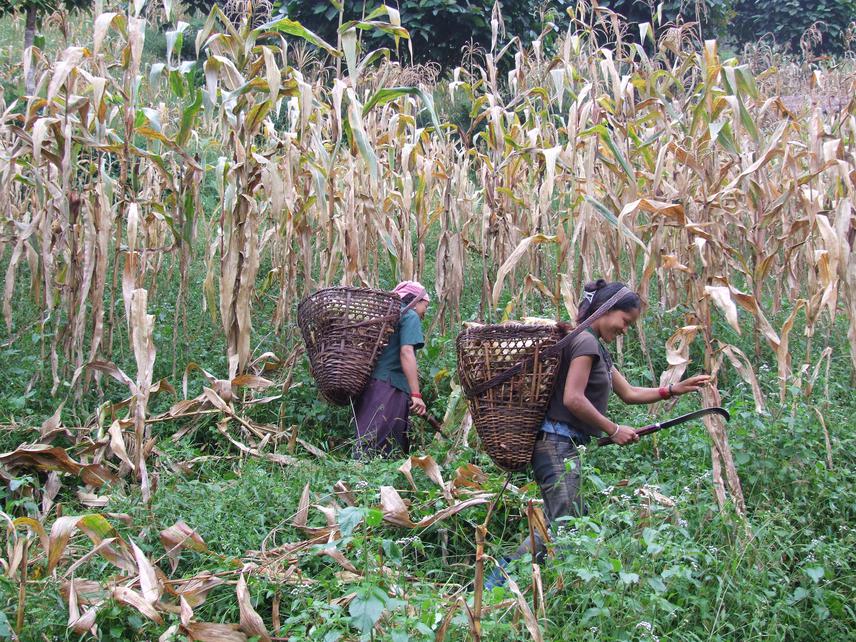Om N. Katel
The aims of this project are:
(a) To identify the biodiversity hotspots areas in biological corridor with special reference to problem species causing human wildlife conflict, and
(b) To analyse underlying factors for human wildlife conflict and how it is affecting farmers’ livelihood in and around biological corridor in central south Bhutan.

Local rural people harvesting maize.
Connectivity is the ability of a landscape to support plants and animals’ movement, their gene flow, seasonal migration and shift of a species geographic range particularly in response to climate change. Biological corridors (BCs) are expected to support such functions in landscapes connecting various ecosystems. Bhutan has gained international recognition for its planned conservation efforts with establishment of about 40% of its land area as Protected Areas (PAs) and connecting those with BCs comprising about nine per cent of country’s land area. The BCs not only connect the habitat for focal species between different PAs but also serve as the important repository of resources for human uses. However, with the establishment of extensive network of BCs, a serious issue of conflicts between rural people and wildlife has surfaced. Human-Wildlife Conflict (HWC) such as crop damage and livestock depredation is putting farmers’ livelihoods, who are living in and around BCs, to risk creating them vulnerable to poverty. It has increasingly become a major threat to Bhutan’s conservation goals.
The protection of biodiversity such as wild life species and others is utmost important, yet at the same time the people who live at the proximity to wildlife are the poorest communities who share the resources with wildlife, and their livelihoods cannot be ignored. Therefore, there is a growing need to assess the degree of conflicts, the direct and indirect impacts of HWC to rural farmers, and their level of participation in conservation activities. This will not only help understand the underlying HWC in BCs but also help design long term conservation strategies.
This study will assess species conservation threats, underlying factors of HWC and its impact to rural famers’ livelihood in PWS-JSWNP-RMNP biological corridor, south central Bhutan. It aims to address five objectives:
(a) Identify and map biodiversity hotspot areas of wildlife species.
(b) Identify problem species and evaluate conflicts between the people and wildlife through quantification of property damaged by wildlife.
(c) Evaluate indirect impacts of HWC to farmers’ well-being.
(d) Assess the participation of local people in conservation activities.
(e) Recommend sustainable management strategy to achieve long term conservation goals.